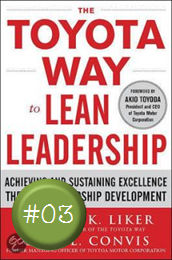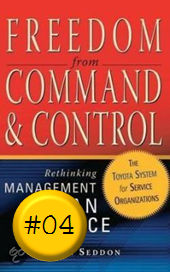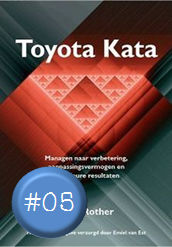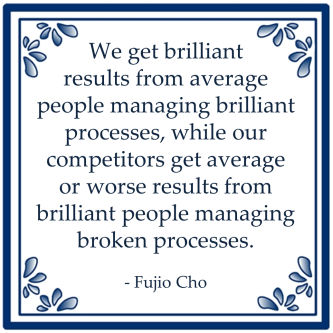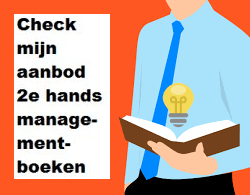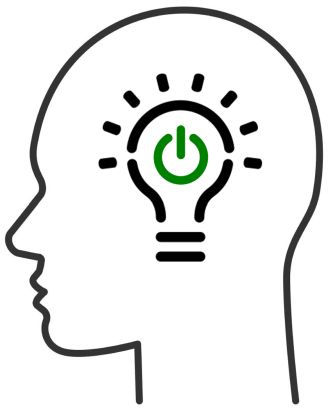
E-learning
Definitie
Verzamelnaam voor het vormgeven van leersituaties (gestuurd en zelfgestuurd) met behulp van informatie- en communicatietechnologie (in het bijzonder internettechnologie).
Alias:
![]()
Computer-based training
Training that is delivered via the computer for the purpose of teaching job-relevant knowledge and skills
E-learning
The use of computer network technology such as the intranet or Internet to deliver information or instruction to individuals
Computer-Based Training
Over the last decade, the use of computers to deliver training has been referred to as computer-based training and e-learning. Although these terms are often used synonymously, there are differences. Computer-based training refers to training that is delivered via the computer for the purpose of teaching job-relevant skills. It can include text, graphics, and/or animation and be deliv¬ered via CD-ROMs, intranets, or the internet." Among the various forms of computer-based training, Web-delivered and CD-ROM formats have received the most attention.
A related and increasingly popular term for technology-based training is e-learning. E-learning (also known as Web-based instruction or WBI) refers to the use of computer network technology such as the intranet or internet to deliver information or instruction to individuals." Thus, e-learning is a specific type of computer-based learning and refers to the use of computer network technology. It would not include the use of CD-ROMs. In the remainder of this chapter, we will use the broader term, computer-based training, which includes e-learning.
One of the ways that computer-based training methods differ is in terms of whether the training is instructor-led or self-directed, the focus of the next section.
![]()
E-Learning
E-learning is one of the most popular forms of training delivery available today. Research suggests the global e-learning market is set to reach over $300 billion in value by 2025, and 77% of U.S.-based organizations use e-learning. These online learning programs use a mix of text audio and video; discussion forums; and/or interactive assessment.
E-learning is a good option for organizations that want to offer flexible learning opportunities in a short time frame to a global audience by delivering interactive and engaging training programs in the form of games, videos, HTML, quizzes and other content. E-learning is also suitable for organizations that need to provide a simulated environment for learners performing high-risk tasks.
![]()
eLearning
eLearning is the delivery of learning through a computer or any digital device. It lends itself to a wide range of industries like retail, healthcare, automotive, and so on. Based on a report from Roland Berger, almost 77% of the organizations in the U.S. use some form of eLearning to train their employees. This high statistic is not a surprise, considering the various advantages it offers.
Common eLearning formats
(1) Online courses
An online course is a self-paced, asynchronous course that allows your employees to complete training online, meaning they don’t need to be physically available at some training venue. Learners can take a course during their free time, from anywhere they choose, like their living room or in the subway. As long as they have a mobile device with internet, they can access courses on demand.
(2) Online games and quizzes
According to research from Metaarih, the growth rate for game-based learning in the corporate sector is very high, at a breathtaking five-year compound annual growth rate of 53.4%. It’s all about taking a boring task or process and turning it into an online game to boost user motivation.
Bron: 5 Training Methods in the Workplace: Choose the Best for Your Employees
![]()
Wat is e-learning?
Voordat we de meest gebruikelijke leerinterventies beschrijven, willen we eerst verduidelijken wat wij onder e-learning verstaan. Vaak wordt e-learning namelijk onterecht als een leerinterventie gelabeld.
Het woord e-learning bestaat uit twee delen: ‘e-’ en ‘learning’. De ‘e-’ refereert aan de manier waarop e-learning wordt gefaciliteerd, namelijk digitaal. Met ‘learning’ worden de leerinterventies bedoeld. E-learning is dus het digitaal faciliteren van leerinterventies. Dit kan door middel van bijvoorbeeld computers, tablets of smartphones.
E-learning is in tegenstelling tot de leerinterventies in dit onderdeel van het kookboek dus niet een aparte leerinterventie, maar een manier om een leerinterventie te faciliteren.
Drop the ‘e’
Zaken digitaal faciliteren is inmiddels gemeengoed geworden. Consumenten kopen hun muziek niet meer op cd’s in de winkel, maar digitaal via iTunes of Spotify. Ook winkelen gebeurt steeds vaker digitaal. Omdat we al een tijd niet meer spreken van ‘e-music’ of ‘e-shopping’ vinden wij dat het tijd is om ook over te stappen van ‘e-learning’ naar ‘learning’. Anno 2015 is bij leertrajecten (net als bij muziek en winkelen) een digitale component niet meer weg te denken. Wij zijn daarom van mening dat het geen toegevoegde waarde heeft om de digitale manier van faciliteren nog een aparte term te geven.
Voor verreweg de meeste leerinterventies bestaat de mogelijkheid om deze digitaal te faciliteren. Bij de leerinterventies op de volgende pagina’s wordt daarom ook de vraag beantwoord: “Wat kan er digitaal worden gefaciliteerd?” en ‘wat kan alleen als de leerinterventie op de traditionele methode wordt gefaciliteerd?’. Daarnaast gaan we in op de voordelen van beide manieren van faciliteren.
De (digitale) kennismodule
De meest voorkomende leerinterventie die digitaal wordt gefaciliteerd is de kennismodule. In de volksmond wordt een digitale kennismodule vaak e-learning genoemd.
De kennismodule staat verderop als leerinterventie uitgewerkt.
Bron: Het blended learning kookboek, Johannes Vinke & Martèn de Prez (pdf)
![]()
Wat is E-learning?
E-learning
E-learning software door Huddle. Start je eigen e-learning platform / ledensite met alle tools voor digitale programma\'s, online trainingen, cursussen, levels, toetsing en meer!
(elektronisch leren) is een opleidingsmodel waarbij er uitsluitend gebruik wordt gemaakt van digitale mogelijkheden. Dit heeft betrekking op zowel de distributie, de communicatie en de facilitering van de cursus. Een website of een online community
Wat is een online community? Een online community is een digitaal platform waarin gelijkgestemde mensen in een besloten groep bij elkaar komen. Binnen deze groep kunnen de mensen met elkaar communiceren, informatie.. zijn uitstekende platforms om een E-learning omgeving in te richten.
Bron: https://www.thehuddle.nl/kennisbank/e-learning-tips/e-learning/
![]()
What is e-Learning?
Since the term e-Learning is used inconsistently, let's start with a basic definition. For the purposes of this discus-sion, e-Learning is content and instructional methods delivered on a computer (whether on CD-ROM, the Internet, or an intranet), and designed to build knowledge and skills related to individual or organizational goals. This definition addresses: The what training delivered in digital form, The how. content and instructional meth-ods to help learn the content, and The why: to improve organizational performance by building job-relevant knowledge and skills in workers.
(...)
There is a distinction among three important elements of an e-lesson: the instructional methods, the instructional media, and media elements.
[W]e recognize that it's not the medium that causes learning. Rather it is the design of the lesson itself and the best use of instructional methods that make the difference. A learner-centered approach suggests that we design lessons that accommodate human learning processes regardless of the media involved.
1. Instructional methods
The techniques used to help learners process new information in ways that lead to learning. Instructional methods include the use of techniques such as examples, practice exercises, simulations, and analogies.
2. Instructional media
The delivery agents that contain the content and the instructional methods including computers, workbooks, and even instructors. Not all media can carry all instructional methods with equal effectiveness. For each new technology that appears on the scene, we typically start by treating it like older media with which we are familiar. For example, much early web-based training looked a lot like books — mostly using text on a screen to communicate content. As the technology behind a given medium matures, we get better at exploiting the features unique to that medium for learning.
3. Media elements
The media elements refer to the text, graphics, and audio used to present content and instructional methods.
Bron: Six principles of effective e-learning: what works and why, Ruth Clark









